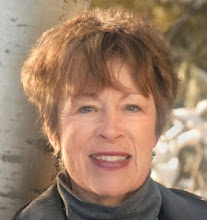 | |
| Mabel Dodge Luhan, photo by Carl Van Vechten, 1934. |
She was a woman of profound contradictions. She was generous. She was petty. Domineering and endearing. She was Mabel Gansen Evans Dodge Sterne Luhan -- salon hostess, art patroness, writer and self-appointed savior of humanity.
Reading this statement on the Mabel Dodge Luhan House website, I wondered if people would ask: "So who was Mabel Dodge Luhan anyway?" The answer is as complex as Mabel herself.
I went looking for statements describing her. From Lois Rudnick's book Mabel Dodge Luhan: New Woman, New Worlds I took two samplings. Poet Witter Bynner, who spent part of summer 1922 as Mabel's guest during his first visit to New Mexico, at first held her in high regard. He extolled her generosity and hospitality: she provided him with food, shelter and the quiet necessary for writing. Within four years Bynner's feelings had changed; he expressed them in his play Cake. Mabel's life and personality traits provided inspiration for the character called "the Lady." As Bynner wrote D.H. Lawrence, some of the play's aspects "were said to be a satire" of Mabel Luhan. When Bynner sent Mabel a copy of the play with a note, he heard that she was "not amused."
At the other end of the spectrum, Mabel's granddaughter Bonnie Evans compared Mabel to a rich tapestry or landscape. In Bonnie's opinion, her grandmother had the ability to create "a physical and emotional arena in which people found the energy to act."
In his autobiography, Ansel Adams described his introduction to Mabel the summer of 1929. He pronounced Los Gallos (her home) "beautiful" and the surrounding countryside "magnificent." Adams noted that Georgia O'Keeffe and John Marin were among his hostess's many guests, and that everyone had the freedom to pursue their "creative business." He had an "agreeable" relationship with Mabel and her husband Tony Lujan. In fact, if it hadn't been for Mabel's hospitality and Tony's assistance with Taos Pueblo officials, Adam's book Taos Pueblo (1930) might not have been published.
During my search for the real Mabel, I noticed how many books on women of the Southwest mention her. Judi Jordan, the resident docent at the Mabel Dodge Luhan House (at least that's one of the many hats she wears) also made this observation. I interviewed Judi this week to see what her study of Mabel revealed.
I asked Judi what struck her most about Mabel Dodge Luhan. She replied that Mabel was a contradiction, a complex woman. Mabel generated her own excitement, and exasperated her friends. She drove D.H. Lawrence crazy, yet she was kind to young people and animals. She took in lost kittens and stray dogs. Once, Lawrence told her she should bake her own bread and wash her own floors. Mabel got down on her hands and knees and washed about half of the Big Room's floors, while her maids looked on, giggling. Judy also mentioned Mabel's generosity: she gifted Taos with its first hospital.
Mabel had a reputation of being overbearing, imperialistic. Yet, of all that Judi related to me, what struck me the most was the Mabel who is not quite so well known--the Mabel who had the gift of silence, the ability to listen deeply. Certainly, the first thing that most people notice when they visit the Mabel Dodge Luhan House is the quiet. She created an exceptional place, a retreat that continues to provide the silence needed for creative work, for thinking, for respite from the world.
Over the next months I will continue to look for the real Mabel. In September the Mabel Dodge Luhan House staff will host a gathering of Taosenos who knew her when they were young. Known as "Granny Mabel" to some, it will be interesting to hear their stories.
What are your thoughts on Mabel? If you knew Mabel or her family members and have a story to tell, please let me know.
Adios for now,
Liz
NEXT: Frieda Lawrence; Mabel Dodge Luhan House staff reflections on the "Remarkable Women" questions from posting number one
Photo credit: Library of Congress, Prints & Photographs Division, Carl Van Vechten Collection

No comments:
Post a Comment